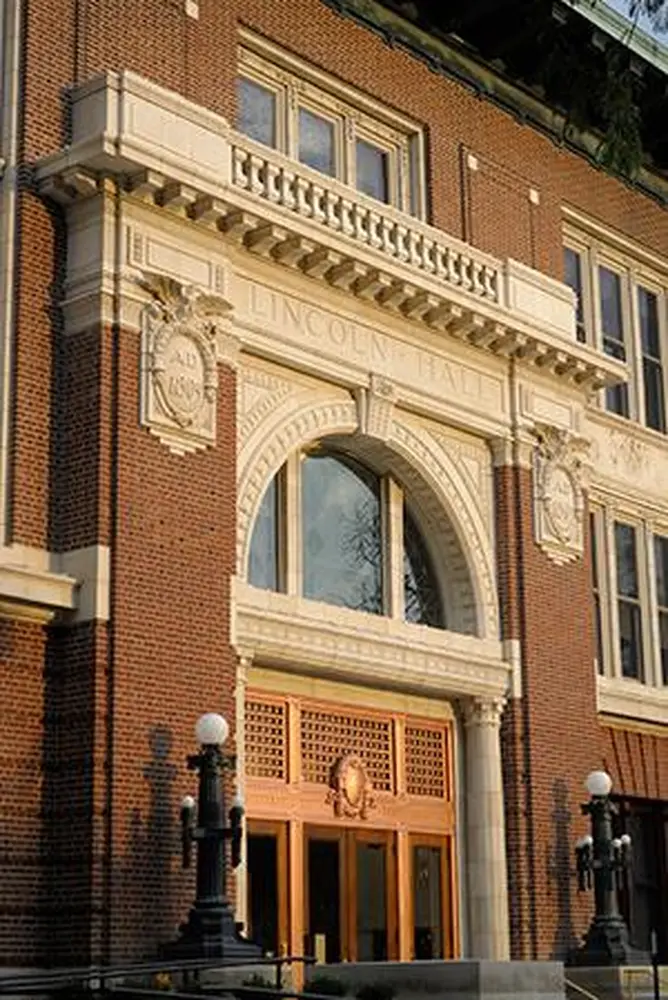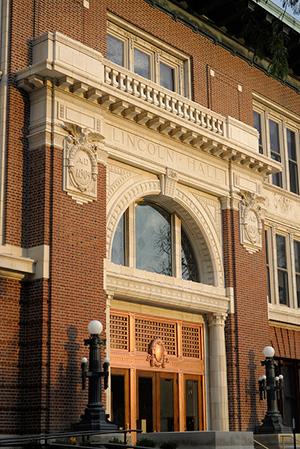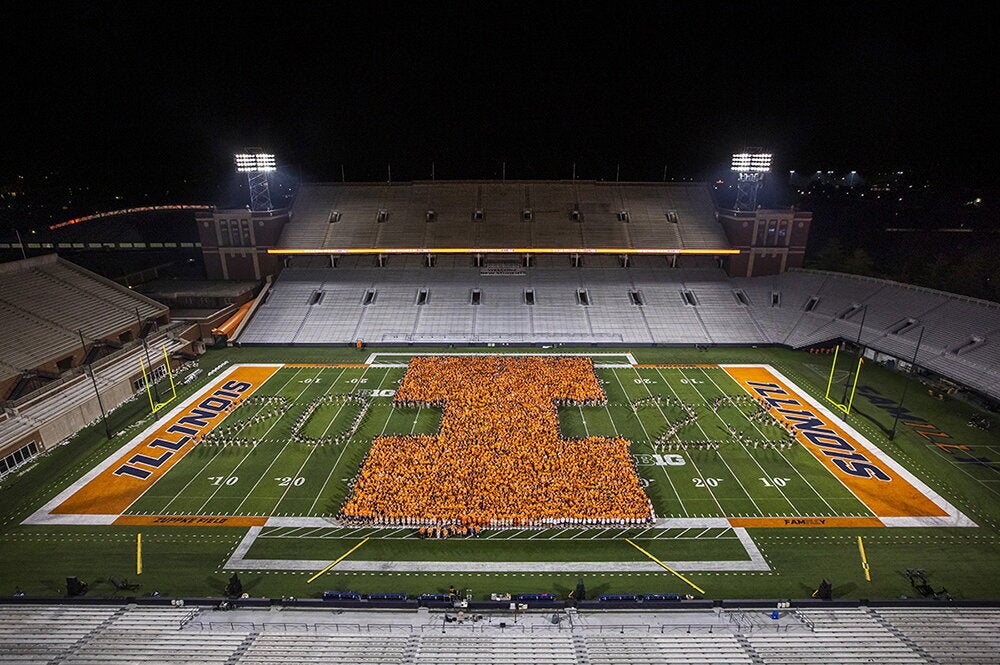

Planners for the historic Lincoln Hall renovation knew they were aiming high when they set out to earn “gold” certification through the U.S. Green Building Council’s (USGBC) environmental sustainability standards. Not only did the project earn gold status, but it did one better.
The USGBC recently awarded the Lincoln Hall project its highest ranking—platinum—in its Leadership in Energy & Environmental Design (LEED) program, which evaluates building construction and renovations on various aspects of sustainability. LEED rankings are touted as the national standard by which “green” building projects are judged.
“As a public land-grant university and a leading research institution, it’s essential that we step to the forefront in implementing green technology on our campus,” says Matthew Tomaszewski, U of I associate provost for capital planning who served as associate dean for administration in the College of LAS during the renovation. “For the University of Illinois, achieving LEED Platinum certification while preserving our architectural heritage allows us to honor past generations while serving future ones.”
Roughly 4.5 billion square feet of building space in the U.S. is ranked in the LEED system. Rankings are based upon a 100-point system, with points granted for meeting certain environmental standards. Basic LEED certification is awarded if a project achieves 40-49 points. “Silver” status is awarded for 50-59 points, “gold” is awarded for 60-79 points, and “platinum” is awarded for 80 points or above.
Preserving and renovating the building’s historic features while creating a modern environment was no small task, but the USGBC awarded LEED Platinum status for a variety of measures, including:
- Reusing 96.6 percent of existing exterior walls, floors, and roofs.
- Diverting 77.5 percent of on-site-generated construction waste through recycling, salvage, and reuse.
- Salvaging, refurbishing, or reusing 32 percent of existing interior components.
- Reducing water use by 42.4 percent over baseline (exemplary performance is 40 percent).
- Renovating two courtyards to encourage casual interaction.
- Removing, refinishing, and reinstalling thousands of feet of oak casing and trim.
- Excavating the basement an additional four feet for more mechanical equipment.
- Achieving 38.4 percent energy-use reduction from the existing building baseline under ASHRAE 90.1-2004 (a U.S. standard applied to most nonresidential buildings).
- Installing quiet and efficient low-velocity air diffusers in classrooms and the theater.
“Accomplishing LEED Platinum from the USGBC is a milestone and U of I is an incredible partner,” says Charles T. Smith, AIA, LEED AP, of Canon Design, which designed the project. “The renovation of Lincoln Hall improved energy efficiency, reconfigured faculty and staff spaces, increased usable space, revamped staff work areas, and enhanced the learning environment, all while preserving the building’s early 20th-century architectural character.”
The Lincoln Hall renovation was approved by the state legislature in 2009 and launched in 2010. Classes resumed inside the building in fall 2012.


